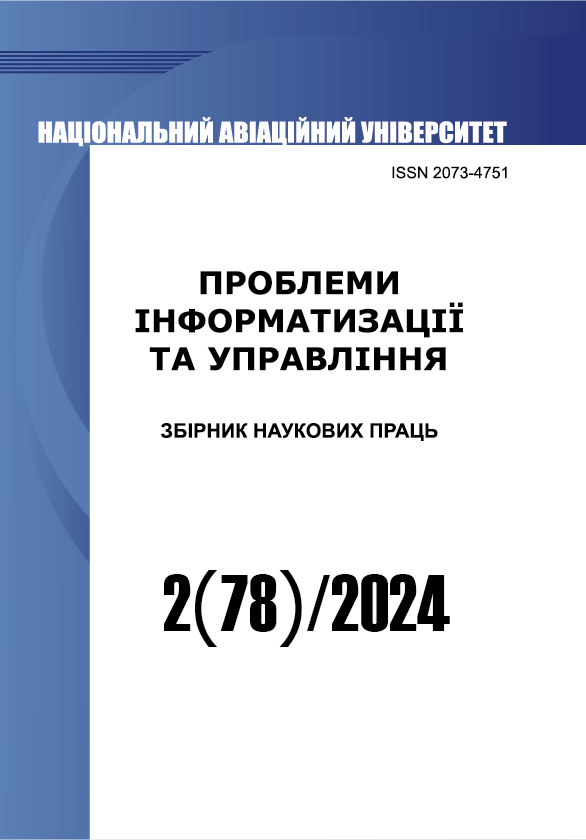Load balancing method in SDN networks using artificial intelligence
DOI:
https://doi.org/10.18372/2073-4751.78.18959Keywords:
artificial intelligence, enterprise networks, SDN, Smart Grids, transport networks, UAV networksAbstract
This paper provides an overview of load balancing in corporate networks using SDN technology and artificial intelligence. It discusses the features and methods of using AI in these networks and identifies potential problems.
The paper reviews the method of load balancing in corporate SDN networks using AI and concludes that AI can automate the process of load balancing in the network. The implementation of AI can enhance network efficiency, decrease costs, and bolster security. This paper suggests the use of artificial intelligence in corporate networks through SDN technology to improve network efficiency and security.
This paper suggests the use of artificial intelligence in corporate networks through SDN technology to improve network efficiency and security. The paper reviews the method of applying AI in these networks and outlines promising areas of research.
This paper presents a theoretical overview of load balancing in enterprise SDN networks, considering their features, and establishes the foundation for future research in this area. The integration of artificial intelligence into corporate networks is a pressing task as it enhances network efficiency and security while also creating new opportunities for development.
References
Kulakov Y. O., Korenko D. V. Methods of applying artificial intelligence in software-defined networks. Problems of Informatization and Control. 2023. Vol. 1, no. 73. P. 23–27.
Chim T. W., Yeung K. L. Traffic distribution over equal-cost-multi-paths. 2004 IEEE International Conference on Communications : proceedings, Paris, France, 20–24 June 2004 / IEEE. Piscataway, 2004. Vol. 2. P. 1207–1211.
William J. D., Towles B. Principles and practices of interconnection networks. Amsterdam : Morgan Kaufmann Publishers, 2004. 550 p.
Alnaser A. M., Kulakov Y. O., Korenko D. V. Modified Method of Traffic Engineering in DCN with a Ramified Topology. International Journal of Advanced Computer Science and Applications. 2021. Vol. 12, no. 12. P. 439–446.
Korenko D. V. et al. Creation of the method of multipath routing using known paths in software-defined networks. Technology audit and production reserves. 2022. Vol. 4, no. 2(66). P. 19–24.
Handigol N. et al. Plug-n-Serve: Load-Balancing Web Traffic using OpenFlow. ACM SIGCOMM 2009 : Demos, Barcelona, Spain, 17–21 August 2009 / ACM SIG, 2009. 2 p.
Wang R., Butnariu D., Rexford J. OpenFlow-based server load balancing gone wild. 11th USENIX conference on Hot topics in management of internet, cloud, and enterprise networks and services (Hot-ICE'11) : proceedings, Boston, MA, USA, 29 March 2011 / USENIX Association. Berkeley, 2011. P. 12–12.
Hu Y. et al. BalanceFlow: Controller load balancing for OpenFlow networks. 2012 IEEE 2nd International Conference on Cloud Computing and Intelligence Systems : proceedings, Hangzhou, China, 30 October–01 November 2012 / IEEE. Beijing, 2012. Vol. 2. P. 780–785.
Gao J. Artificial neural network principle and simulation examples. Beijing : Mechanical Industry Press, 2007.
Downloads
Published
Issue
Section
License
Автори, які публікуються у цьому журналі, погоджуються з наступними умовами:- Автори залишають за собою право на авторство своєї роботи та передають журналу право першої публікації цієї роботи на умовах ліцензії Creative Commons Attribution License, котра дозволяє іншим особам вільно розповсюджувати опубліковану роботу з обов'язковим посиланням на авторів оригінальної роботи та першу публікацію роботи у цьому журналі.
- Автори мають право укладати самостійні додаткові угоди щодо неексклюзивного розповсюдження роботи у тому вигляді, в якому вона була опублікована цим журналом (наприклад, розміщувати роботу в електронному сховищі установи або публікувати у складі монографії), за умови збереження посилання на першу публікацію роботи у цьому журналі.
- Політика журналу дозволяє і заохочує розміщення авторами в мережі Інтернет (наприклад, у сховищах установ або на особистих веб-сайтах) рукопису роботи, як до подання цього рукопису до редакції, так і під час його редакційного опрацювання, оскільки це сприяє виникненню продуктивної наукової дискусії та позитивно позначається на оперативності та динаміці цитування опублікованої роботи (див. The Effect of Open Access).


